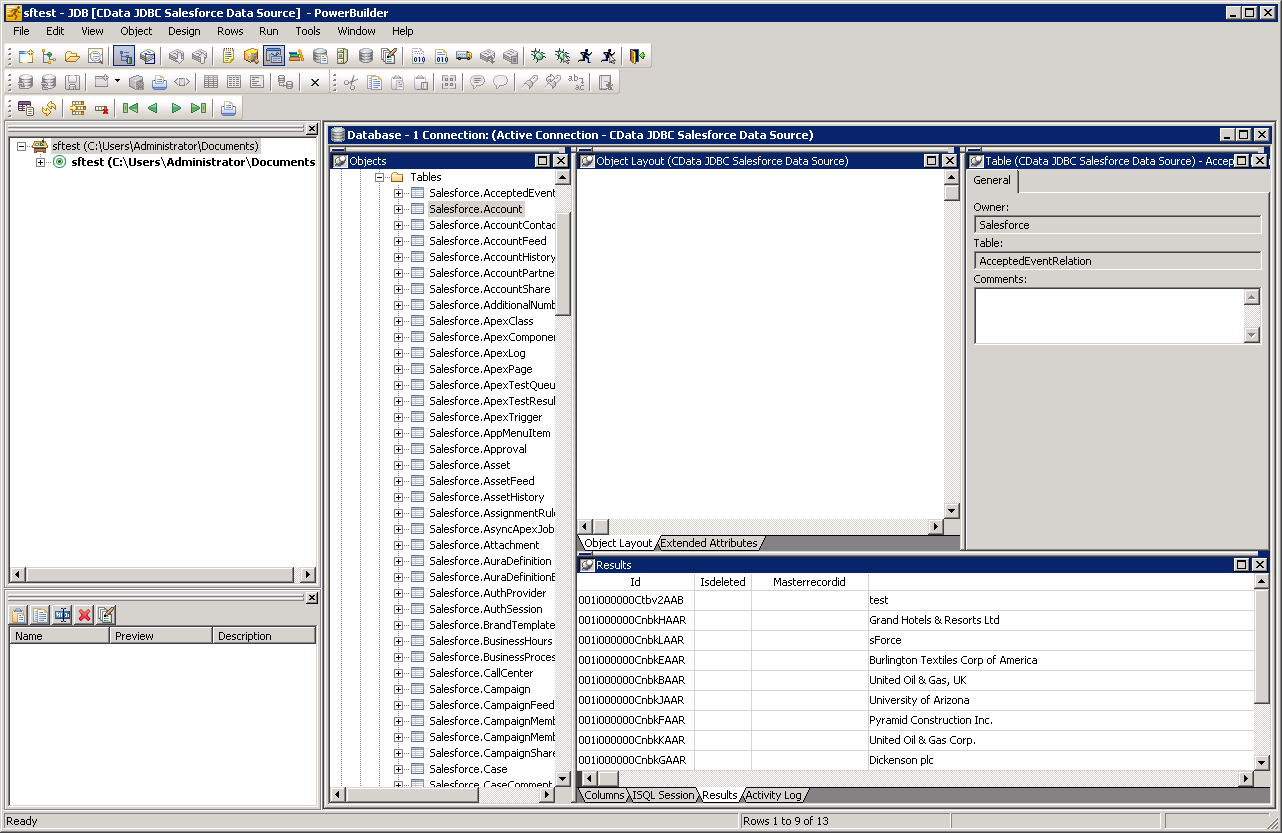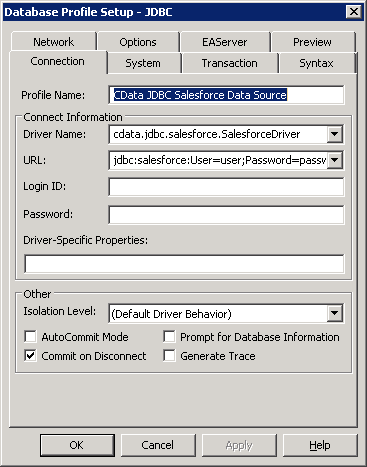Model Context Protocol (MCP) finally gives AI models a way to access the business data needed to make them really useful at work. CData MCP Servers have the depth and performance to make sure AI has access to all of the answers.
Try them now for free →Connect to Calendly Data from PowerBuilder
This article demonstrates how to access Calendly data from PowerBuilder using the Calendly JDBC Driver.
The CData JDBC driver for Calendly is a standards-based control that can be used from any platform or development technology that supports JDBC, including PowerBuilder. This article shows how to use the CData JDBC Driver for Calendly in PowerBuilder.
This article shows how to create a basic PowerBuilder application that uses the CData JDBC Driver for Calendly to retrieve data.
Connect to Calendly Data from PowerBuilder
Follow the steps below to use the Database Painter tool to create a database profile based on an JDBC URL for Calendly. You can use a database profile to save connection properties. In the Database Painter, you can graphically manipulate data as well as execute SQL queries.
Add the driver JAR to the PowerBuilder classpath. Set the CLASSPATH system environment variable to the path to the driver JAR, located in the lib subfolder of the installation directory.
Note: If you are using PowerBuilder Classic, you can also add the path to the driver JAR by clicking Tools -> System Options -> Java.
- Click Tools -> Database Painter.
- Right-click the JDBC node and click New Profile.
- In the Database Profile Setup dialog, enter the following:
- Profile Name: Enter a user-friendly name for the profile.
- Driver Name: Enter the class name of the driver, cdata.jdbc.api.APIDriver
- URL: Enter the JDBC URL.
Start by setting the Profile connection property to the location of the Calendly Profile on disk (e.g. C:\profiles\CalendlyProfile.apip). Next, set the ProfileSettings connection property to the connection string for Calendly (see below).
Calendly API Profile Settings
To authenticate to Calendly, you will need to provide an API Key. The Calendly API Key, can be found in your Calendly account, under 'Integrations' > 'API & Webhooks' > 'Generate New Token'. Set the APIKey in the ProfileSettings connection property.
Built-in Connection String Designer
For assistance in constructing the JDBC URL, use the connection string designer built into the Calendly JDBC Driver. Either double-click the JAR file or execute the jar file from the command-line.
java -jar cdata.jdbc.api.jarFill in the connection properties and copy the connection string to the clipboard. A typical JDBC URL is below:
jdbc:api:Profile=C:\profiles\Calendly.apip;ProfileSettings='APIKey=your_api_token';
![The JDBC data source defined in the Database Profile Setup dialog. (Salesforce is shown.)]()
- To view and modify a table, right-click a table and then click Edit Data -> Grid.

Using Calendly Data with PowerBuilder Controls
You can use standard PowerBuilder objects to connect to JDBC data sources and execute queries. The following example shows how to retrieve Calendly data into a DataWindow. You can add the following code to the open method:
SQLCA.DBMS = "JDBC"
SQLCA.AutoCommit = False
SQLCA.DBParm = "Driver='cdata.jdbc.api.APIDriver',URL='jdbc:api:Profile=C:\profiles\Calendly.apip;ProfileSettings='APIKey=your_api_token';";
CONNECT USING SQLCA;
dw_organizationscheduledevents.SetTransObject(SQLCA);
dw_organizationscheduledevents.Retrieve();


